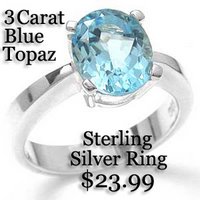Sterling Silver Jewelry: Ruby Etymology
 The earliest European connection to the word Ruby, referring directly to the gem type and not describing the color, was ‘Rubinus lapis’: Latin for ‘Red Stone’. ‘Rubinus’ from the Latin ‘Rubeus’ originated from the ancient Proto-Indo-European language and its word ‘Reudh’: meaning ‘Red’. Proto-Indo-European, dating back to 3,500 B.C., was the root of all languages from Europe to India. Aside from European Greek or Latin, its influences can be seen in the Indian language of Sanskrit dating from 400 B.C., and its word for ‘Red’: ‘Rudhira’. Red is the only color in the spectrum that shares common etymological links that stretch across continents this far back into ancient history.
The earliest European connection to the word Ruby, referring directly to the gem type and not describing the color, was ‘Rubinus lapis’: Latin for ‘Red Stone’. ‘Rubinus’ from the Latin ‘Rubeus’ originated from the ancient Proto-Indo-European language and its word ‘Reudh’: meaning ‘Red’. Proto-Indo-European, dating back to 3,500 B.C., was the root of all languages from Europe to India. Aside from European Greek or Latin, its influences can be seen in the Indian language of Sanskrit dating from 400 B.C., and its word for ‘Red’: ‘Rudhira’. Red is the only color in the spectrum that shares common etymological links that stretch across continents this far back into ancient history. Although it’s no longer the case today, in ancient times Ruby was also referred to by another name. This word like ‘Reudh’ describes the Ruby’s coloration, but in a more figurative sense more closely related to the properties of a gemstone. The first recorded instance of this word appears in the Bible’s Book Of Exodus, which documents Moses leading the Hebrew slaves out of Amenhotep II’s Egypt, circa 1444 B.C.:
Although it’s no longer the case today, in ancient times Ruby was also referred to by another name. This word like ‘Reudh’ describes the Ruby’s coloration, but in a more figurative sense more closely related to the properties of a gemstone. The first recorded instance of this word appears in the Bible’s Book Of Exodus, which documents Moses leading the Hebrew slaves out of Amenhotep II’s Egypt, circa 1444 B.C.: And thou shalt make the breastplate of judgment…
And thou shalt make the breastplate of judgment…And thou shalt set in it settings of stones, even four rows of stones: the first row shall be a sardius, a topaz, and a carbuncle: this shall be the first row.
And the second row shall be an emerald, a sapphire, and a diamond.
And the third row a ligure, an agate, and an amethyst.
And the fourth row a beryl, and an onyx, and jasper: they shall be set in gold in their inclosings.
The Ruby was referred to as ‘Carbuncle’. This literally meant ‘A little burning coal’ from the prefix ‘Carbo’ as in ‘Carbon’. Pondering a ruby one can see the relevancy of the description: its deep reds burning like an ember in an open fire.
 However, it seems that the ancients of the near east, unaware of the differences in red gemstones, used the term ‘Carbuncle’ as a universal term for all that was red including garnet, tourmaline and spinel. This confusion resulted in the mistaken identities of two of the most famous gemstones in history: The Timur Ruby and The Black Princes Ruby, one now in the Crown Jewels of England and the other in Queen Elizabeth II’s private jewelry collection. In 1815 both gemstones were discovered to be spinels.
However, it seems that the ancients of the near east, unaware of the differences in red gemstones, used the term ‘Carbuncle’ as a universal term for all that was red including garnet, tourmaline and spinel. This confusion resulted in the mistaken identities of two of the most famous gemstones in history: The Timur Ruby and The Black Princes Ruby, one now in the Crown Jewels of England and the other in Queen Elizabeth II’s private jewelry collection. In 1815 both gemstones were discovered to be spinels. The misnomer caused quite a fuss in Victorian England, so later on in1890 when the Irish author and dandy Oscar Wilde wrote ‘The Picture of Dorian Gray’, he was careful not to mince his words, choosing the more figurative of the red gemstones pseudonyms, carefully detailing its properties: “He would often spend a whole day settling and resettling in their cases the various stones that be had collected, such as the olive-green chrysoberyl that turns red by lamplight, the cymophane with its wire like line of silver, the pistachio-colored peridot, rose-pink and wine-yellow topazes, carbuncles of fiery scarlet with tremulous, four-rayed stars…”
The misnomer caused quite a fuss in Victorian England, so later on in1890 when the Irish author and dandy Oscar Wilde wrote ‘The Picture of Dorian Gray’, he was careful not to mince his words, choosing the more figurative of the red gemstones pseudonyms, carefully detailing its properties: “He would often spend a whole day settling and resettling in their cases the various stones that be had collected, such as the olive-green chrysoberyl that turns red by lamplight, the cymophane with its wire like line of silver, the pistachio-colored peridot, rose-pink and wine-yellow topazes, carbuncles of fiery scarlet with tremulous, four-rayed stars…”
Back east, home to the world’s most ancient and beautiful Ruby deposits, it seems that the art of Ruby identification was much more developed. On the ancient Southern Continent the Indian Sanskrit writings referred to Ruby as ‘Ratnaraj’: ‘The King of Jewels’, describing it as the most precious of all gemstones, the prized possession of Rajas and Emperors alike.











 Lapis Lazuli
Lapis Lazuli


